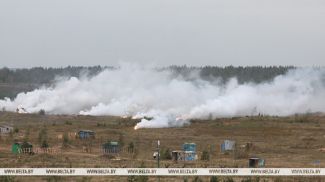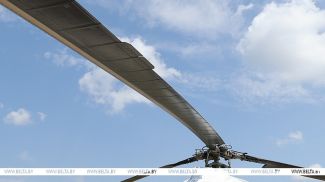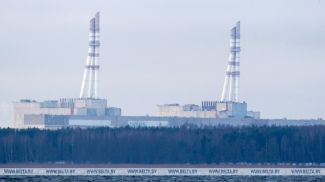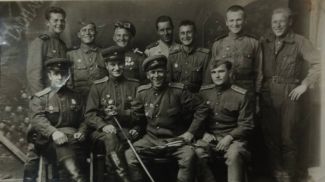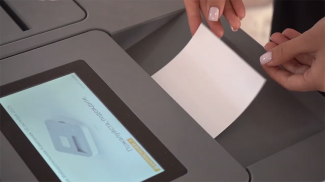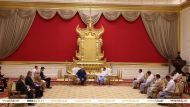
This year Novogrudok celebrates the 980th anniversary of the first mention in historical chronicles. Think about it, almost a millennium! This is just a mention, but how many years did it exist before that?
This Belarusian city and its people have made a significant contribution to the history of not only our country but also to Europe and the world as a whole. It is worth remembering at least the names of Grand Dukes Mindouh, Hiedymin, Jahajla and also Adam Mickiewicz, Sophia Grojsman, Jan Czeczot, Jan Bulhak, Barys Kit and many others. Do not forget that the city was the capital of the Grand Duchy of Lithuania, Russia and Samogitia.
In order to get acquainted with the history of the region and its people, we suggest visiting the museums of Novogrudok.

It is noteworthy Novogrudok had no museum for a very long time, despite the historical heritage of the city. The one we are talking about was founded in the late 1980s thanks to local historians and scientists, the natives of the region. Inside, you can immediately feel the spirit of history: there are no new-age renovations; most of the expositions have been working since inception.
The museum presents the exhibits that are related to the history of Novogrudok from its origin to the 20th century. Here you can see the materials of archaeological excavations on Castle Hill. The mock-ups give you an idea what Novogrudok Castle looked like in different periods. You can also examine household and farming items, crafts, tailoring, embroidery and weaving items and also the clothes our ancestors used to wear in the early 20th century and the Novogrudok women’s costumes.

The paper-cutting technique is also informative and interesting. In Novogrudok District, they have a special technique for making vytinankas. Here, the pattern is embossed using a chisel or a flattened nail. In 2014, the Novogrudok paper cutting art was recognized as an object of the Belarusian intangible cultural heritage.
The museum also houses an exposition about life in the interwar period of 1921-1939. A separate hall provides information about the tragic events during the Great Patriotic War.

Museum of Jewish Resistance
The Museum of Jewish Resistance is the next stop on our tour around Novorudok. This is a separate exposition in the Novogrudok Museum of History and Regional Studies, which was unveiled in the summer of 2007. The museum tells the story of a tragedy that killed more than 5,000 Jews of the city and the resistance of those who survived the four acts of extermination.
Did you know that a Jewish partisan detachment, the most numerous in the occupied Europe, successfully operated in Novogrudok District in the summer of 1942? The commander Tuvia Bielski admitted everyone to the unit, including young and old, children. During the years of war more than 1,300 people were members of the detachment, and about 1,200 of them survived the war.

We certainly advise you not to pass by the house-museum of Adam Mickiewicz.
The first attempt to create a museum of Adam Mickiewicz in Novogrudok dates back to 1920 when the Soviet authorities issued an order to create a museum and library named after Adam Mickiewicz in his house. However, Novogrudok soon became part of Poland. In 1936 the exposition of the future museum was placed in the outhouse. In September 1938 the museum opened its doors to visitors. The money for the bronze monument to the poet, which is still in the exposition, was raised by the citizens of Novogrudok. It was bought from the widow of sculptor Antoine Bourdelle in Paris.

In June 1941, a German air bomb hit the building, destroying it and most of the exhibits. The rest of the exhibits were taken to Poland.
The house-museum was restored to its pre-war state and opened in 1955 to mark the 100th anniversary of Adam Mickiewicz's death. At the end of the 1980s an outhouse, a barn, a pavilion and a well were reconstructed.

Now the museum has five rooms: the nursery, the father's study, the fireplace room, the parlor and the dining room. All of them are filled with items from the 18-19th centuries, which tell about different periods of the life of Adam Mickiewicz and his family. The only surviving pre-war exhibit is the bronze monument. There are both permanent exhibitions devoted to the poem Pan Tadeusz and to the Mickiewicz household and also temporary exhibitions.
After visiting this museum, you’d want to learn more about the interesting life of Adam Mickiewicz, read his poems, and remember the poems by Alexander Pushkin, with whom Mickiewicz was very friendly.
Text and photos by Ksenia Dmitrieva
This Belarusian city and its people have made a significant contribution to the history of not only our country but also to Europe and the world as a whole. It is worth remembering at least the names of Grand Dukes Mindouh, Hiedymin, Jahajla and also Adam Mickiewicz, Sophia Grojsman, Jan Czeczot, Jan Bulhak, Barys Kit and many others. Do not forget that the city was the capital of the Grand Duchy of Lithuania, Russia and Samogitia.
In order to get acquainted with the history of the region and its people, we suggest visiting the museums of Novogrudok.

Novogrudok Museum of History and Regional Studies
It is noteworthy Novogrudok had no museum for a very long time, despite the historical heritage of the city. The one we are talking about was founded in the late 1980s thanks to local historians and scientists, the natives of the region. Inside, you can immediately feel the spirit of history: there are no new-age renovations; most of the expositions have been working since inception.
The museum presents the exhibits that are related to the history of Novogrudok from its origin to the 20th century. Here you can see the materials of archaeological excavations on Castle Hill. The mock-ups give you an idea what Novogrudok Castle looked like in different periods. You can also examine household and farming items, crafts, tailoring, embroidery and weaving items and also the clothes our ancestors used to wear in the early 20th century and the Novogrudok women’s costumes.

The paper-cutting technique is also informative and interesting. In Novogrudok District, they have a special technique for making vytinankas. Here, the pattern is embossed using a chisel or a flattened nail. In 2014, the Novogrudok paper cutting art was recognized as an object of the Belarusian intangible cultural heritage.
The museum also houses an exposition about life in the interwar period of 1921-1939. A separate hall provides information about the tragic events during the Great Patriotic War.

Museum of Jewish Resistance
The Museum of Jewish Resistance is the next stop on our tour around Novorudok. This is a separate exposition in the Novogrudok Museum of History and Regional Studies, which was unveiled in the summer of 2007. The museum tells the story of a tragedy that killed more than 5,000 Jews of the city and the resistance of those who survived the four acts of extermination.
Did you know that a Jewish partisan detachment, the most numerous in the occupied Europe, successfully operated in Novogrudok District in the summer of 1942? The commander Tuvia Bielski admitted everyone to the unit, including young and old, children. During the years of war more than 1,300 people were members of the detachment, and about 1,200 of them survived the war.

In the autumn of 1943, the prisoners of the Novogrudok ghetto escaped through a tunnel that they had been digging for four months. It was the most massive and successful escape in the occupied Europe. According to the testimony of one of the participants, Jack (Idel) Kagan (a British millionaire, thanks to whom the world learned this story), “this could happen in no other country but Belarus. Only in Belarus”.
The exposition of the museum is located in the former barracks, where the ghetto was located. The interior was restored, and the entrance to the tunnel was reconstructed. The exposition has the information about its construction and the organizers of the escape, the Jewish partisan detachment and the participants of the resistance.
The visit will leave an indelible mark in your memory and make you appreciate life. It will also make you think that people of different ethnicities have lived in Belarus throughout the ages. They always lived in peace, harmony and understanding.

House-museum of Adam Mickiewicz
We certainly advise you not to pass by the house-museum of Adam Mickiewicz.
The first attempt to create a museum of Adam Mickiewicz in Novogrudok dates back to 1920 when the Soviet authorities issued an order to create a museum and library named after Adam Mickiewicz in his house. However, Novogrudok soon became part of Poland. In 1936 the exposition of the future museum was placed in the outhouse. In September 1938 the museum opened its doors to visitors. The money for the bronze monument to the poet, which is still in the exposition, was raised by the citizens of Novogrudok. It was bought from the widow of sculptor Antoine Bourdelle in Paris.

After Western Belarus reunited with the BSSR, the house-museum was not closed. The projects to repair the museum and set up a library were in the works. At that time there were court records of Mickiewicz’s father and grandfather, his letters to friends, and books from his home library.
In June 1941, a German air bomb hit the building, destroying it and most of the exhibits. The rest of the exhibits were taken to Poland.
The house-museum was restored to its pre-war state and opened in 1955 to mark the 100th anniversary of Adam Mickiewicz's death. At the end of the 1980s an outhouse, a barn, a pavilion and a well were reconstructed.

Now the museum has five rooms: the nursery, the father's study, the fireplace room, the parlor and the dining room. All of them are filled with items from the 18-19th centuries, which tell about different periods of the life of Adam Mickiewicz and his family. The only surviving pre-war exhibit is the bronze monument. There are both permanent exhibitions devoted to the poem Pan Tadeusz and to the Mickiewicz household and also temporary exhibitions.
After visiting this museum, you’d want to learn more about the interesting life of Adam Mickiewicz, read his poems, and remember the poems by Alexander Pushkin, with whom Mickiewicz was very friendly.
Text and photos by Ksenia Dmitrieva




